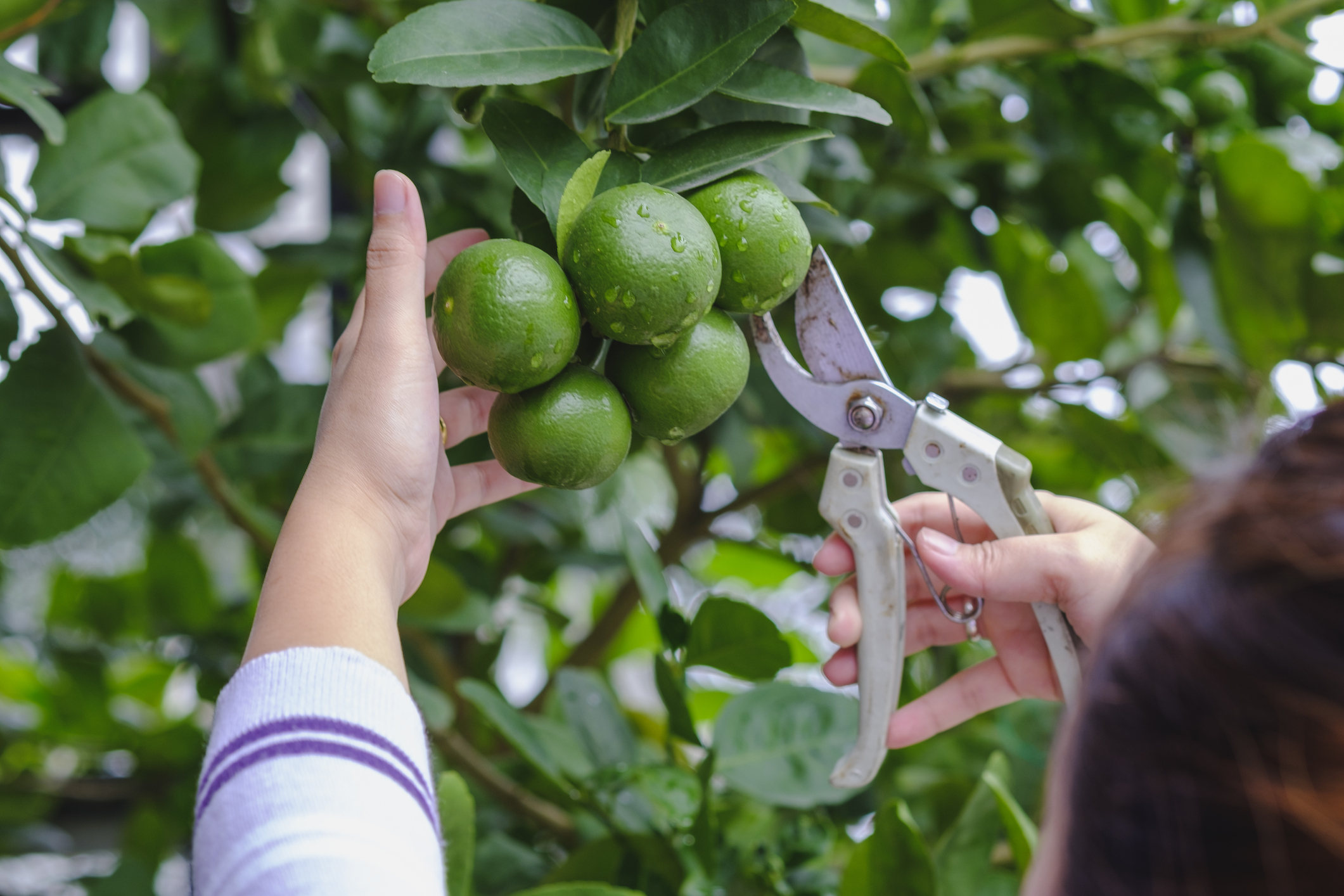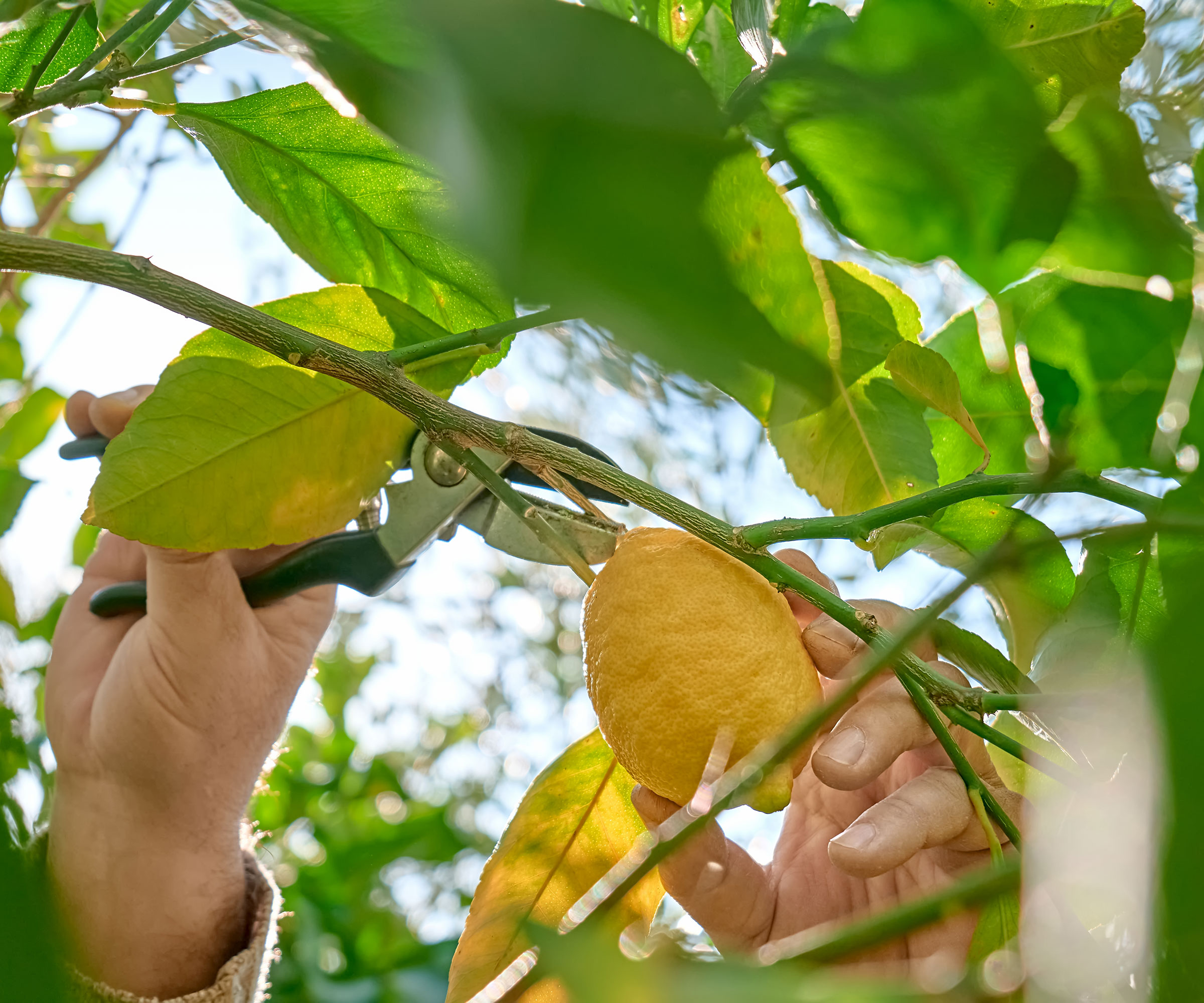
There's no one month in which all fruit trees should be pruned since each variety has different needs, and there are different reasons for pruning, whether that's trimming off leafy growth to encourage fruiting for established trees or encouraging a young tree to bear fruit. Or perhaps, your fruit tree has damaged, weak or diseased branches that need pruning right now?
While most of us consider fruit tree pruning a winter gardening job, some will benefit from cutting back in summer.
We asked experts for their advice on when to prune fruit trees by variety, and when to do so in summer, winter, when trees are established and young. So if you want to keep your best fruit trees in tip top condition, this is what to know.
When to prune fruit trees

There's an easy distinction between fruit trees that can guide when you prune them:
'Fruit trees with stones, such as peaches, cherries and plums, are best pruned in spring or summer so that they don't fall prey to diseases such as bacterial canker and silver leaf infection,' says Homes & Gardens' resident kitchen garden expert and gardens writer Drew Swainston.
Fruit trees with pips, such as pears, quince and apples, are generally pruned in winter.
When to prune fruit trees by variety

- Apples are pruned every winter; this will encourage new shoots and fruiting wood for the following season. Espaliered trees, and other trained apple trees, such as fans and cordons, need mid-summer pruning to encourage fruiting wood; this should be repeated in winter to help them keep their neat shape and to remove branches that are crossing. You can read more about pruning apple trees, when to prune an apple tree and pruning espaliered apples in our separate guides.
- Apricots, one of the best fruit trees to grow in pots, can be pruned into a neat form after the buds have burst in spring; after that, prune routinely in summer, once the tree is established.
- Cherries, including trained cherries, should be pruned in summer when established, though you can lightly prune young trees in spring to help them grow into a neat shape. You can read more about pruning cherry trees in our separate guide.
- Citrus trees, which are great choices if you are looking to grow fruit trees indoors, should be pruned in late winter through early spring. You can find out more details on when to prune citrus trees in our separate guide; we also have more advice on when to prune lemon trees, and how to prune lemon trees.
- Figs are best pruned in early spring, once the frosts have passed and while the trees are still in dormancy, and again at the start of summer. We have much more information on how to prune a fig tree in our separate guide, but the aim is to remove dead or diseased wood to create a well-shaped tree in spring, and to encourage fruiting in summer.
- Medlars, one of the best fruit trees for small gardens, should be pruned in winter when young to create a neat structure, then, once established, only when removing dead or diseased branches or to remove stems from the middle of the tree.
- Mulberries, those gorgeous trees with red berries, are pruned like apples when young, with routine pruning in winter to remove any diseased or dead branches; once established, they need little pruning.
- Nectarines need pruning annually between late spring and summer, in dry (not wet) weather, to avoid the spread of fungal spores.
- Peaches can be treated the same as nectarines. You can find out more about pruning peach trees and nectarines in our separate guide.
- Pears, some of the best fast-growing fruit trees, can be treated like apples. You can find out more about how to prune pear trees in our separate guide.
- Plums, when young, can be pruned to shape in spring; once established, you just need to prune plums in summer in dry weather to remove diseased, dead or crossing branches. You can find out more about when to prune plum trees and how to prune plum trees in our separate guides.
- Quince should be pruned in winter to create a neat framework when they are young. Once established only prune to remove diseased, dead or out of place shoots. Suckers should be torn off at source.
When to prune fruit trees in summer

Prune stone fruit trees in mid-summer. There are various reasons for pruning fruit trees with stones in summer, including:
To keep the tree's shape neat
'Most fruit trees that are pruned in summer need around half to three quarters of almost every young shoot being cut back; this should not only improve shape but ensure they produce less new wood and make more flower buds, and therefore fruits instead,' says Drew Swainston.
Improving fruit quantities
'Too much leafy growth might lead to sparse or poor fruiting,' says Drew. Pruning in summer will de-invigorate the tree to help it produce more fruit of better quality.
Improving fruit color and flavor
'Pruning fruit trees with stones in summer will also allow more light to reach the developing fruit, improving its color and perhaps even flavor,' continues Drew.
To avoid disease spread
'Stone fruits can only be pruned in spring or summer, when they are in active growth, if you are to avoid allowing in silver leaf disease.'
When to prune fruit trees in winter
Pruning fruit trees with pips in winter while they are dormant allows the branches to recover before the growth period restarts. The reasons for pruning in winter include:
To encourage growth
'Pruning fruit trees once the sap goes down means fewer resources are taken away than they would be if you leave it until the sap is rising, and the buds start to swell towards the end of winter,' says Bob Flowerdew, Amateur Gardening's organic gardening expert.
To reduce the chance of damage
Pruning fruit trees in winter 'reduces their chances of windrock damage and breakages,' continues Bob. 'Plants expect winter damage and so are equipped to deal with it.'
To help them keep their form
'Trained fruit such as espalier apples and pears will need pruning in winter, as if these are left they soon lose their form – cut back almost all their shoots to stubs only, leaving those needed to extend the frameworks,' concludes Bob.
When to prune young fruit trees
Young fruit trees, both stone and pip, need ‘formative pruning’ to help them keep their shape. To do this, cut back the central ‘leader’ branch, shortening the ends of the spreading branches to form a strong silhouette.
Formative pruning of young apple and pear trees should happen in winter. Young stone fruits should be pruned in spring before bud burst; once they're established, summer pruning will be required.
When to prune established fruit trees
Established (five years upwards) pip trees should be pruned in winter, keeping the center of the tree open to promote growth and fruiting buds.
FAQs
Can you prune fruit trees too much?
You can prune fruit trees too much; if anything, pruning them too little is preferable. Some fruit trees, such as some apple and quince trees bear fruit on their tips, so pruning these back could result in fewer fruits.
Which fruit trees should not be pruned?
Once established, the following fruit trees should not be pruned or pruned sparingly: tip-bearing apple trees, medlar, mulberry, plum and quince.
When pruning fruit trees, it's vital to make a clean cut to avoid damage to the branches, which can cause disease and broken branches. For this, you might need telescopic pruning shears, like these from Amazon. They are a good buy for safety, since they will ensure you aren't balancing on a wobbly ladder while leaning into a tree.







